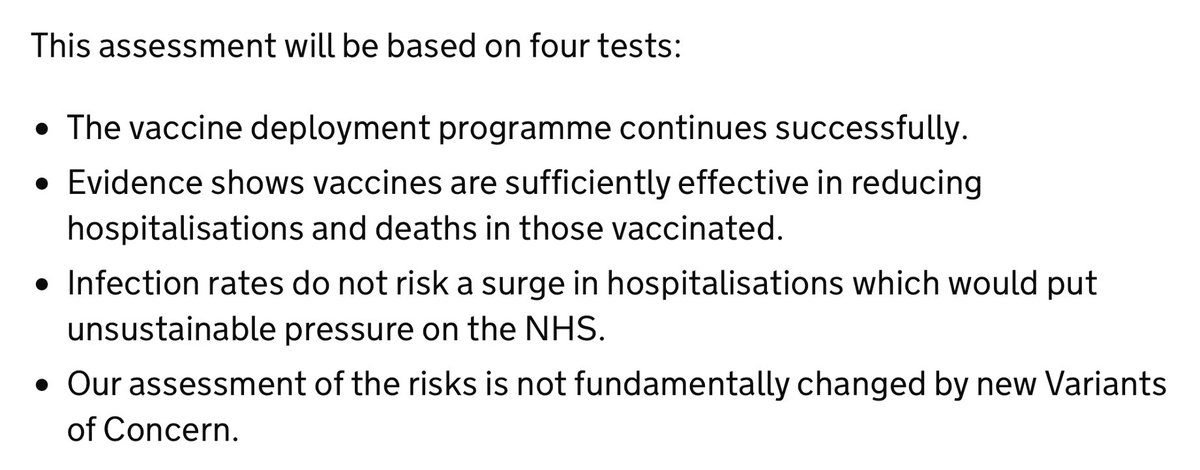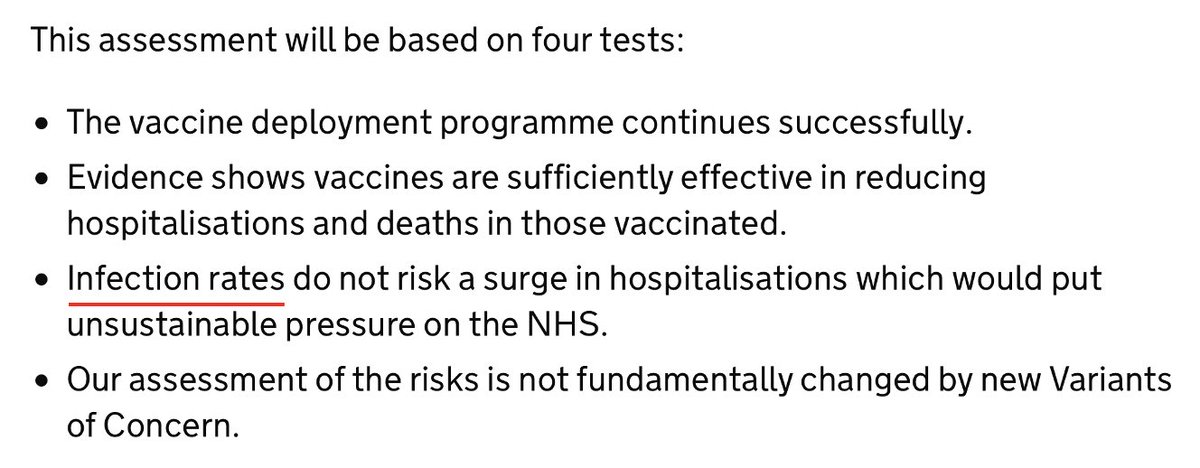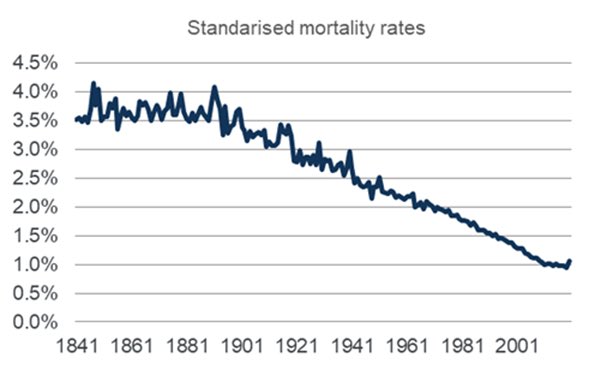
Remember when the PM announced the easing of lockdown it was going to be about data not dates? Well now we’ve had a bit more data in this feels like as good a time as any to see how we’re doing (Thread)
Strictly speaking “data not dates” meant a few crucial datapoints, as laid out in the documents at the time. In particular, there were four tests, roughly as follows:
1. Are enough people being vaccinated?
2. Are vaccines “working”?
3. Are infections surging?
4. New variants 😱
1. Are enough people being vaccinated?
2. Are vaccines “working”?
3. Are infections surging?
4. New variants 😱

Test one: Are vaccines being deployed successfully?
Seems to be going very well. Over 90% of those aged over 70 have been vaccinated which is beyond what many expected. Over 80% for all but those aged over 100 interestingly
Seems to be going very well. Over 90% of those aged over 70 have been vaccinated which is beyond what many expected. Over 80% for all but those aged over 100 interestingly

But there are concerns about vaccine coverage among some ethnic groups. While the % of those vaccinated aged over 70% is over 90% for White British, it’s 69% for Black Caribbean and 59% for Black African ethnicities. So while test 1 is prob a pass, it’s not without some concerns 

Test 2 is whether those vaccinated are seeing a fall in hospitalisations and deaths. And here too the news is encouraging. This chart shows you the change in hospitalisations from the peak. Rate at which over-65 hospitalisations is falling faster than under-65s 

And have a look at this chart: the change in #COVID19 cases for those aged over 70 vs the aged under 70. Both lines have fallen (as you’d expect during lockdown) but look at the divergence in recent weeks.
Very, very promising indeed.
Very, very promising indeed.

So tests one and two look to have been passed. How about test 3: that we should guard against a rise in infection rates? In broad terms cases in the UK are still very low indeed. But given this is all about “data not dates” let’s drill more closely into the data 

One concern among public health officials was that schools would reopen and that would push up cases. Has that happened? The white lines here are school/university age groups, the black lines are “grown ups”. Some of those white lines seem to have turned. BUT not all. 

It’s hard to know how concerned to get about this. These lines are really modelled estimates from the @ONS so they may change shape next week quite markedly, due to modelling effects. In short, this might be noise rather than a signal. But worth keeping a close eye on… 

Other measures on cases look v encouraging. The UK has gone from having the highest level of #COVID19 among major European countries (the grey lines here) to having one of the lowest levels. I’ve highlighted Sweden because, well, everyone always asks about Sweden 

The fourth & final test was about new variants. Are there any we should be concerned about? Short answer, not really. The bars here show you how everything else is utterly dwarfed by the Kent variant. (B.1525, the next biggest, had only 55 cases in the past few days) 

In short, if we’re looking specifically at “data not dates” the data is looking pretty reassuring right now on those four tests (though we should keep a close eye on cases in the coming weeks). But good news. Hurrah!
Finally, you might recall that back when @BorisJohnson announced the easing of lockdown we got a lot of documents illustrating what *might* happen under certain different easing scenarios. This was one of the charts, based on Imperial’s modelling. Quite scary! 

I’ve superimposed the latest hospitalisation data onto the Imperial projections.
Warning: this is rough & ready.
But it suggests we may be doing somewhat BETTER than even the best case scenarios in these models suggested. (1: latest data, 2. original Imperial chart)

Warning: this is rough & ready.
But it suggests we may be doing somewhat BETTER than even the best case scenarios in these models suggested. (1: latest data, 2. original Imperial chart)


• • •
Missing some Tweet in this thread? You can try to
force a refresh













